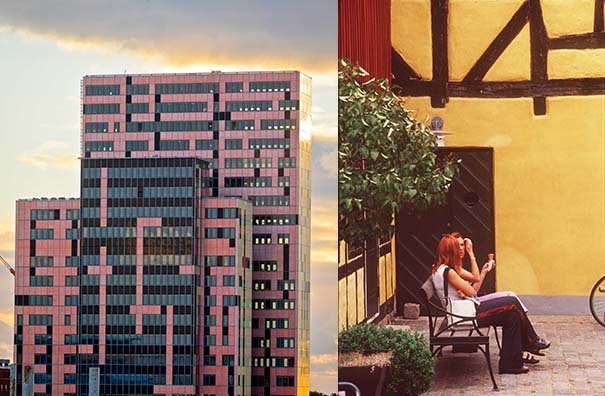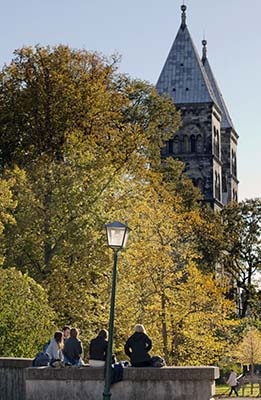General information on Lund
Lund is a very pleasant city, both young and old at one and the same time. The large numbers of students are plain to see in the street life of the winding medieval alleyways. At the same time, new districts are growing, a future tram system is being planned, and large-scale constructions such as ESS and MAX IV are in full swing. It’s easy to like Lund. Everything is within easy reach. The Cathedral, the university, the museums, restaurants, cafés, and pubs, and many of the hotels, are all within walking distance of the centre.
History of Lund
Lund was founded at the end of the 10th century and is one of Sweden’s oldest cities. New excavations show that the city probably moved from Uppåkra, about 5 km further south, when the settlement there burned down. Previously there was a mint here, as well as the oldest school in Scandinavia, the Cathedral School, founded in 1085. The splendid Cathedral was built during the first half of the 12th century, and in the Middle Ages Lund was Denmark’s most important city. In 1658 Skåne became the property of Sweden rather than Denmark, and in order to speed up the process of becoming properly Swedish, Lund University was built in 1666. In the middle of the 19th century, a railway was constructed from Malmö via Lund and further north. Now the industrial revolution had reached Lund. The city grew throughout the 20th century, and today it is home to 110,000 people. This growth is partly due to the university and the health service, and partly to high-tech industries such as Tetra Pak and Gambro, all with links to the university.
Lund is one of Sweden’s fastest growing cities and has several new initiatives under way. Currently it has 110,000 inhabitants, and the forecast for 2020 is 124,000 inhabitants.
To take home with you
Lund has many delightful shops, so it’s an easy matter to find presents to take back home with you. The tourist office has a good selection, as does the shop at the Museum of Cultural History. The magnolia is Lund’s own special flower, and many gift items feature a magnolia design. Local handicraft items, often with a modern design, are sold by the handicrafts collective Skånekraft, which has a shop in central Lund.
Not to be missed in Lund:
The Cathedral, preferably when the medieval cathedral clock is playing In Dulci Jubilo. This happens every weekday at 12.00 and 15.00. On Sundays 13.00 and 15.00.
The Museum of Cultural History (Kulturen), with its Open-air museum with historic buildings, right in the center of Lund.
The History Museum’s exhibition Barbaricum with interesting finds from the Iron Age settlement of Uppåkra.
The Museum of Sketches, the only art museum in the world to specialise in collecting sketches and models for public art from all over the world.
In the central parts of Lund you will also find: the Botanical gardens and Stadsparken. Go for a little walk and enjoy the greenery. Lundagård, go for a stroll there and on Universitetsplatsen. Mårtenstorget and the market, which is especially busy towards the end of the week. Klostergatan, which is now Lund’s foodie district, bustling with top-quality grocery shops and restaurants. Why not try Lundaknaken, a spicy sausage made to a secret recipe. The sausage is eaten hot, with mustard. You can buy the sausages from Holmqvist in Saluhallen or from Widerbergs Kött & Charkuteriaffär.
For things to do, please vistit: http://www.visitlund.se/en/meetings/things-to-do

